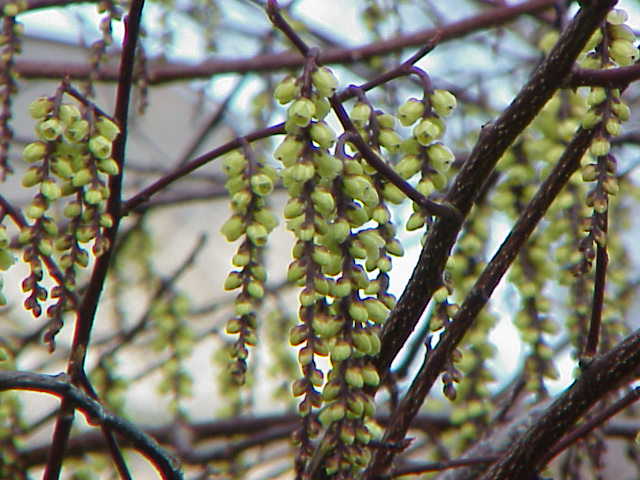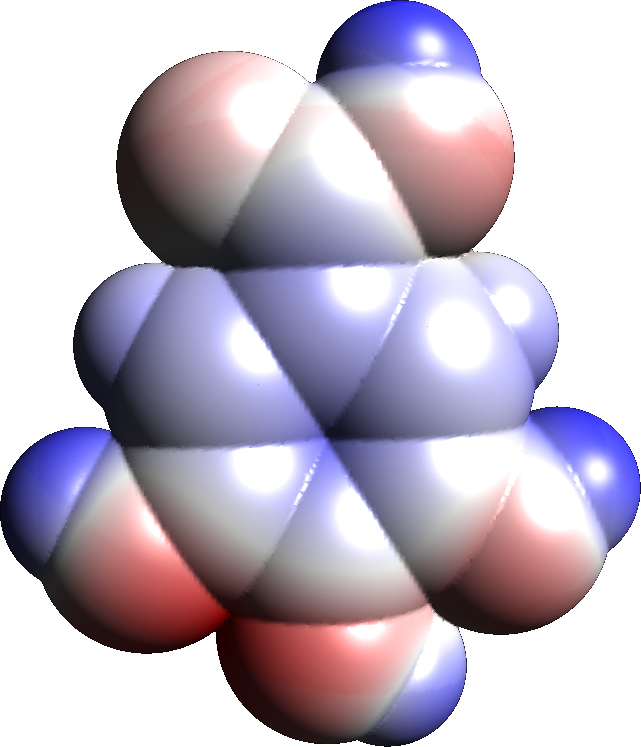|
Tellimagrandin II
Tellimagrandin II is the first of the ellagitannins formed from 1,2,3,4,6-pentagalloyl-glucose. It can be found in '' Geum japonicum'' and ''Syzygium aromaticum'' (clove).Purification and Characterization of Eugeniin as an Anti-herpesvirus Compound from Geum japonicum and Syzygium aromaticum. Masahiko Kurokawa, Toyoharu Hozumi, Purusotam Basnet, Michio Nakano, Shigetoshi Kadota, Tuneo Namba, Takashi Kawana and Kimiyasu Shiraki, JPET, February 1, 1998 vol. 284 no. 2, pages 728-735article Tellimagrandin II is an isomer of punicafolin or nupharin A, but the hexahydroxydiphenoyl group is not attached to the same hydroxyl groups in the glucose molecule. The compound shows anti-herpesvirus properties. Metabolism It is formed by oxidation of pentagalloyl glucose in '' Tellima grandiflora'' by the enzyme pentagalloylglucose: O(2) oxidoreductase, a laccase-type phenol oxidase. It is further oxidized to casuarictin, a molecule formed via oxidative dehydrogenation of 2 other galloyl ... [...More Info...] [...Related Items...] OR: [Wikipedia] [Google] [Baidu] |
Ellagitannin
The ellagitannins are a diverse class of hydrolyzable tannins, a type of polyphenol formed primarily from the oxidative linkage of galloyl groups in 1,2,3,4,6-pentagalloyl glucose. Ellagitannins differ from gallotannins, in that their galloyl groups are linked through C-C bonds, whereas the galloyl groups in gallotannins are linked by depside bonds. Ellagitannins contain various numbers of hexahydroxydiphenoyl units, as well as galloyl units and/or sanguisorboyl units bounded to sugar moiety. In order to determine the quantity of every individual unit, the hydrolysis of the extracts with trifluoroacetic acid in methanol/water system is performed. Hexahydroxydiphenic acid, created after hydrolysis, spontaneously lactonized to ellagic acid, and sanguisorbic acid to sanguisorbic acid dilactone, while gallic acid remains intact. Ellagitannins generally form macrocycles, whereas gallotannins do not. Examples * Castalagin * Castalin * Casuarictin * Grandinin * Oenothein B from ... [...More Info...] [...Related Items...] OR: [Wikipedia] [Google] [Baidu] |
O(2) Oxidoreductase
O, or o, is the fifteenth letter and the fourth vowel letter in the Latin alphabet, used in the modern English alphabet, the alphabets of other western European languages and others worldwide. Its name in English is ''o'' (pronounced ), plural ''oes''. History Its graphic form has remained fairly constant from Phoenician times until today. The name of the Phoenician letter was '' ʿeyn'', meaning "eye", and indeed its shape originates simply as a drawing of a human eye (possibly inspired by the corresponding Egyptian hieroglyph, cf. Proto-Sinaitic script). Its original sound value was that of a consonant, probably , the sound represented by the cognate Arabic letter ع ''ʿayn''. The use of this Phoenician letter for a vowel sound is due to the early Greek alphabets, which adopted the letter as O "omicron" to represent the vowel . The letter was adopted with this value in the Old Italic alphabets, including the early Latin alphabet. In Greek, a variation of the for ... [...More Info...] [...Related Items...] OR: [Wikipedia] [Google] [Baidu] |
Cornusiin E
Cornusiin E is a dimeric derivative of tellimagrandin II Tellimagrandin II is the first of the ellagitannins formed from 1,2,3,4,6-pentagalloyl-glucose. It can be found in '' Geum japonicum'' and ''Syzygium aromaticum'' (clove).Purification and Characterization of Eugeniin as an Anti-herpesvirus Compoun ... found in '' Tellima grandiflora''. References External links Cornusiin E at biocyc.org Ellagitannins Tannin dimers {{aromatic-stub ... [...More Info...] [...Related Items...] OR: [Wikipedia] [Google] [Baidu] |
Stachyurus
''Stachyurus'' is the only genus in the flowering plant family Stachyuraceae, native to the Himalayas and eastern Asia. They are deciduous shrubs or small trees with pendent racemes of 4-petalled flowers which appear on the bare branches before the leaves. The plants have leaves with serrate margins. Pendunculagin, casuarictin, strictinin, casuarinin and casuariin are ellagitannins found in species in this genus. ''Stachyurus praecox'' from Japan, and the slightly later-flowering ''S. chinensis'' from China, are both cultivated as ornamental plants, valued for their exceptionally early flowering periods. Species list * ''Stachyurus chinensis'' * ''Stachyurus coaetaneus'' * ''Stachyurus cordatulus'' * ''Stachyurus himalaicus'' * ''Stachyurus obovatus'' * ''Stachyurus praecox'' * ''Stachyurus retusus'' * ''Stachyurus salicifolius'' * ''Stachyurus yunnanensis ''Stachyurus'' is the only genus in the flowering plant family Stachyuraceae, native to the Himalayas and ... [...More Info...] [...Related Items...] OR: [Wikipedia] [Google] [Baidu] |
Casuarina
''Casuarina'' is a genus of 17 tree species in the family Casuarinaceae, native to Australia, the Indian subcontinent, southeast Asia, islands of the western Pacific Ocean, and eastern Africa. It was once treated as the sole genus in the family, but has since been split into four genera (see: Casuarinaceae).Flora of Australia''Casuarina''/ref> They are evergreen shrubs and trees growing to tall. The slender, green to grey-green twigs bearing minute scale-leaves in whorls of 5–20. The apetalous flowers are produced in small catkin-like inflorescences. Most species are dioecious, but a few are monoecious. The fruit is a woody, oval structure superficially resembling a conifer cone, made up of numerous carpels, each containing a single seed with a small wing. The generic name is derived from the Malay word for the cassowary, ''kasuari'', alluding to the similarities between the bird's feathers and the plant's foliage, though the tree is called ''ru'' in Modern Malay. Kare ... [...More Info...] [...Related Items...] OR: [Wikipedia] [Google] [Baidu] |
Galloyl
Gallic acid (also known as 3,4,5-trihydroxybenzoic acid) is a trihydroxybenzoic acid with the formula carbon, C6hydrogen, H2(hydroxide, OH)3CO2H. It is classified as a phenolic acid. It is found in gallnuts, sumac, Witch-hazel, witch hazel, tea leaves, oak bark, and other plants. It is a white solid, although samples are typically brown owing to partial oxidation. Salt (chemistry), Salts and esters of gallic acid are termed "gallates". Isolation and derivatives Gallic acid is easily freed from gallotannins by acidic or alkaline hydrolysis. When heated with concentrated sulfuric acid, gallic acid converts to rufigallol. Hydrolyzable tannins break down on hydrolysis to give gallic acid and glucose or ellagic acid and glucose, known as gallotannins and ellagitannins, respectively. Biosynthesis Gallic acid is formed from 3-dehydroshikimate by the action of the enzyme shikimate dehydrogenase to produce 3,5-didehydroshikimate. This latter compound aromatization, aromatizes. Rea ... [...More Info...] [...Related Items...] OR: [Wikipedia] [Google] [Baidu] |
Dehydrogenation
In chemistry, dehydrogenation is a chemical reaction that involves the removal of hydrogen, usually from an organic molecule. It is the reverse of hydrogenation. Dehydrogenation is important, both as a useful reaction and a serious problem. At its simplest, it is useful way of converting alkanes, which are relatively inert and thus low-valued, to olefins, which are reactive and thus more valuable. Alkenes are precursors to aldehydes (), alcohols (), polymers, and aromatics. As a problematic reaction, the fouling and inactivation of many catalysts arises via coking, which is the dehydrogenative polymerization of organic substrates. Enzymes that catalyze dehydrogenation are called dehydrogenases. Heterogeneous catalytic routes Styrene Dehydrogenation processes are used extensively to produce aromatics in the petrochemical industry. Such processes are highly endothermic and require temperatures of 500 °C and above. Dehydrogenation also converts saturated fats to unsatura ... [...More Info...] [...Related Items...] OR: [Wikipedia] [Google] [Baidu] |
Casuarictin
Casuarictin is an ellagitannin, a type of hydrolysable tannin. It can be found in ''Casuarina'' and ''Stachyurus'' species.Tannins of Casuarina and Stachyurus species. I: Structures of pendunculagin, casuarictin, strictinin, casuarinin, casuariin, and stachyurin. Okuda T., Yoshida T., Ashida M. and Yazaki K., Journal of the Chemical Society, 1983, number 8, pages 1765-1772, It is formed from two hexahydroxydiphenic acid units and one gallic acid unit linked to a glucose molecule. The molecule is formed from tellimagrandin II, itself formed from pentagalloyl glucose via oxidation. Casuarictin is transformed into pedunculagin via loss of a gallate group, and further into castalagin Castalagin is an ellagitannin, a type of hydrolyzable tannin, found in oak and chestnut wood and in the stem barks of '' Anogeissus leiocarpus'' and ''Terminalia avicennoides''. Castalagin is the diastereomer of vescalagin in C-1 of the glycosidi ... via glucose pyranose ring opening. Oligomers Sa ... [...More Info...] [...Related Items...] OR: [Wikipedia] [Google] [Baidu] |
Laccase
Laccases () are multicopper oxidases found in plants, fungi, and bacteria. Laccases oxidize a variety of phenolic substrates, performing one-electron oxidations, leading to crosslinking. For example, laccases play a role in the formation of lignin by promoting the oxidative coupling of monolignols, a family of naturally occurring phenols. Other laccases, such as those produced by the fungus ''Pleurotus ostreatus'', play a role in the degradation of lignin, and can therefore be classed as lignin-modifying enzymes. Other laccases produced by fungi can facilitate the biosynthesis of melanin pigments. Laccases catalyze ring cleavage of aromatic compounds. Laccase was first studied by Hikorokuro Yoshida in 1883 and then by Gabriel Bertrand in 1894 in the sap of the Japanese lacquer tree, where it helps to form lacquer, hence the name laccase. Active site The active site consists of four copper centers, which adopt structures classified as type I, type II, and type III. A tric ... [...More Info...] [...Related Items...] OR: [Wikipedia] [Google] [Baidu] |
Tellima Grandiflora
''Tellima grandiflora'', the bigflower tellima or fringecups, is a herbaceous perennial flowering plant in the family Saxifragaceae. It is the only species in the genus ''Tellima''. Description It has rounded stalked leaves mostly growing from the base emerging from a rootstock and bluntly toothed reaching heights of 30 cm.Parnell, J. and Curtis, T. 2012. ''Webb's An Irish Flora''. Cork University Press. It is evergreen in mild winters. Flowers are borne in spring and early summer, on spikes, terminal racemes, up to 60 cm high. The green calyx is 6–8 mm long; the five flower petals are greenish-white to purple, pinnately divided and spreading. The petals are deeply fringed. It has 10 stamens and 2 styles. Distribution The plant is a native of moist forests in western North America, from Alaska and British Columbia to northern California. It can be a garden escape and become naturalised in some other areas, ''e.g.'' Ireland and Great Britain. Although it is secure ... [...More Info...] [...Related Items...] OR: [Wikipedia] [Google] [Baidu] |
1,2,3,4,6-pentagalloyl-glucose
1,2,3,4,6-Pentagalloylglucose is the pentagallic acid ester of glucose. It is a gallotannin and the precursor of ellagitannins. Pentagalloyl glucose can precipitate proteins, including human salivary α-amylase. Natural occurrence 1,2,3,4,6-Pentagalloyl glucose can be found in ''Punica granatum'' (pomegranate), '' Elaeocarpus sylvestris'', ''Rhus typhina'' (Staghorn sumac), ''Paeonia suffruticosa'' (Tree Peony),., ''Mangifera indica'' (mango) and ''Bouea macrophylla'' Griffith ( maprang). Biosynthesis The enzyme beta-glucogallin-tetrakisgalloylglucose O-galloyltransferase uses 1-O-galloyl-beta-D-glucose and 1,2,3,6-tetrakis-O-galloyl-beta-D-glucose to produce D-glucose and pentagalloyl glucose. Metabolism Tellimagrandin II is formed from pentagalloyl glucose by oxidative dehydrogenation and coupling of 2 galloyl groups. β-glucogallin: 1,2,3,4,6-pentagalloyl-β-d-glucose galloyltransferase is an enzyme found in the leaves of ''Rhus typhina'' that catalyzes the galloy ... [...More Info...] [...Related Items...] OR: [Wikipedia] [Google] [Baidu] |
1,2,3,4,6-Pentagalloyl Glucose
1,2,3,4,6-Pentagalloylglucose is the pentagallic acid ester of glucose. It is a gallotannin and the precursor of ellagitannins. Pentagalloyl glucose can precipitate proteins, including human salivary α-amylase. Natural occurrence 1,2,3,4,6-Pentagalloyl glucose can be found in ''Punica granatum'' (pomegranate), '' Elaeocarpus sylvestris'', ''Rhus typhina'' (Staghorn sumac), ''Paeonia suffruticosa'' (Tree Peony),., ''Mangifera indica'' ( mango) and ''Bouea macrophylla'' Griffith ( maprang). Biosynthesis The enzyme beta-glucogallin-tetrakisgalloylglucose O-galloyltransferase uses 1-O-galloyl-beta-D-glucose and 1,2,3,6-tetrakis-O-galloyl-beta-D-glucose to produce D-glucose and pentagalloyl glucose. Metabolism Tellimagrandin II is formed from pentagalloyl glucose by oxidative dehydrogenation and coupling of 2 galloyl groups. β-glucogallin: 1,2,3,4,6-pentagalloyl-β-d-glucose galloyltransferase is an enzyme found in the leaves of ''Rhus typhina'' that catalyzes the gallo ... [...More Info...] [...Related Items...] OR: [Wikipedia] [Google] [Baidu] |



